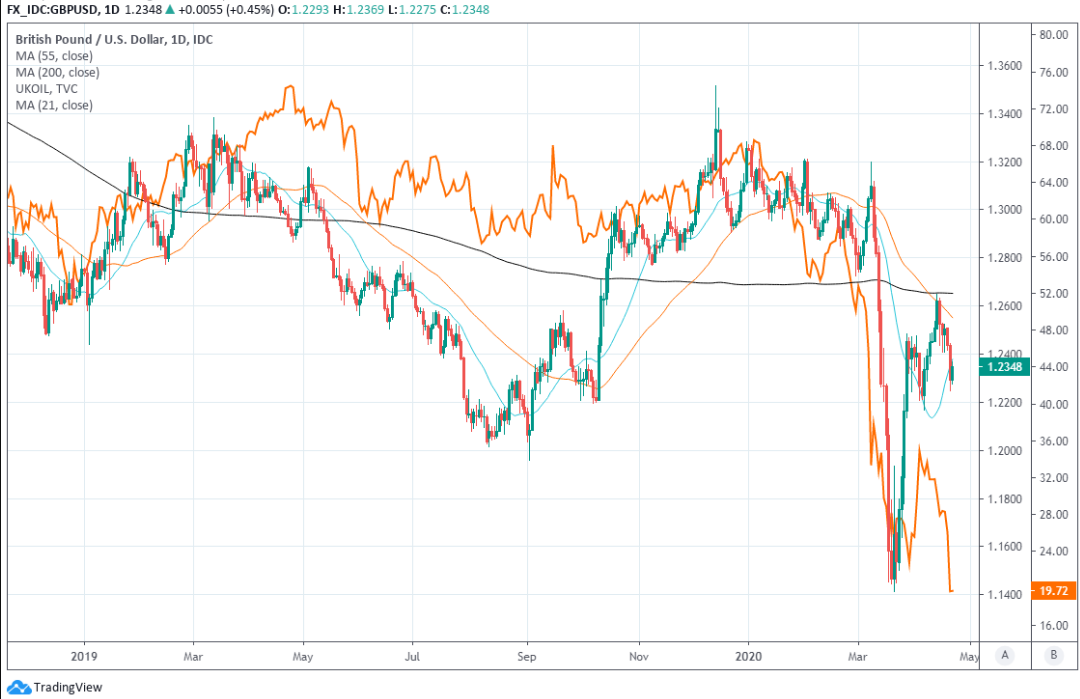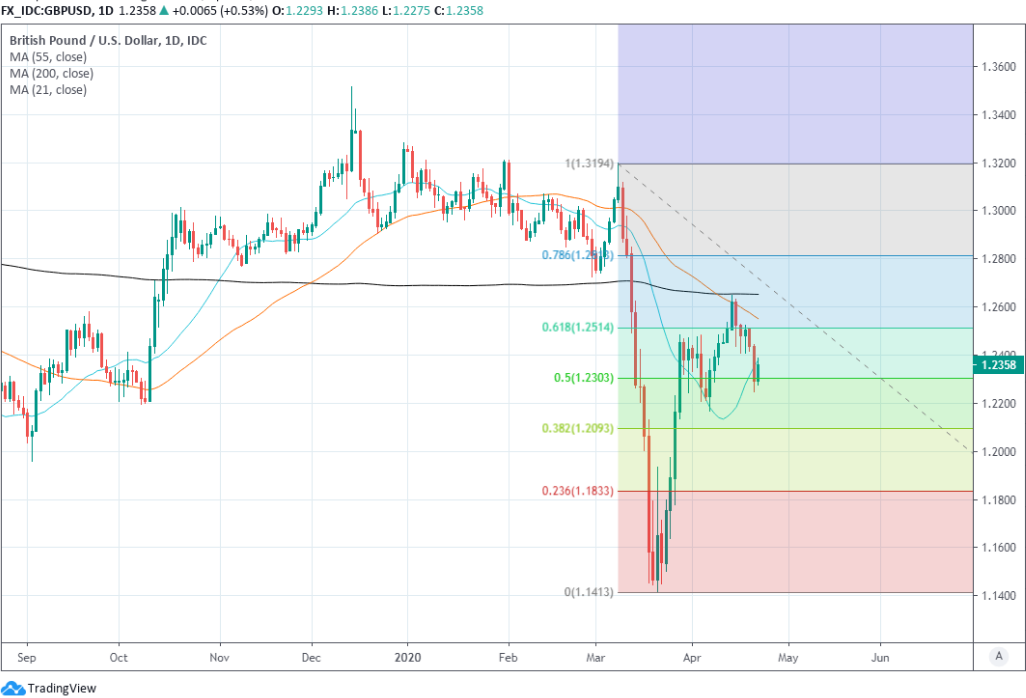Pound-Dollar Recovery Could Fall Apart If Brent Crude Futures Go the Same Way as WTI
- Written by: James Skinner
-

Image © Adobe Images
- GBP/USD spot at time of writing: 1.2499
- Bank transfer rates (indicative): 1.2027-1.2114
- FX specialist rates (indicative): 1.2175-1.2249 >> More information
The Pound-Dollar rate was in recovery mode on Wednesday after a soft start to the new week and as risk assets stabilised in the wake of an oil-inspired sell-off, but the upward correction might unravel if Brent crude oil futures prices go the same way as their North American counterparts in the coming days.
Sterling swung back into the black after two days of punishing declines as Brent oil prices and stock markets appeared to stabilise in the wake of historic losses that saw futures of West Texas Intermediate crude oil fall from above $20 per barrel to - $37 per barrel amid an unprecedented supply glut that's pushed storage capacity constraints to critical levels.
Oil storage facilities are full, and the shuttered factories and empty office blocks that litter the commercial landscape are ill suited to storing the corrosive and highly flammable liquid, posing a challenge to producers and policymakers alike as the coronvirus-induced global economic standstill continues to see demand evaporate. This is first and foremost a burden for currencies of oil producing countries, of which the UK is not one, although Sterling does still have an uncanny correlation with the price of Brent crude futures.
"Now it’s the turn for Brent," says Mark Wilson, chief market analyst at Markets.com. "We see similar concerns about floating storage starting to fill up as physical storage constraints worrying WTI. The roll this Friday could be gappy, although Brent is cash settled, not physically, so in theory it ought not to be as troubled and negative prices are unlikely. That said, if global storage is running out – and that is what the Brent trade is starting to suggest – then there will be no bid and prices could hit zero."

Above: Pound-Dollar rate shown at daily intervals alongside ICE Brent crude oil futures price for June month (orange line).
Sterling faces a litany of downside risks ranging from the overtures of a stronger-for-longer Dollar, a negative technical outlook on the charts and now a possible blowout in the market for Brent crude futures, the global benchmark for oil prices. Market.com's Wilson says oil "prices could hit zero" because there's quite literally no buyers for barrels that need to be bought, paid for and delivered on Wednesday or any day soon, which is a situation that's expected to endure at least until late in the second quarter.
It remains to be seen if the downside for Brent oil will be as severe as that seen in WTI crude futures because the European oil industry is far smaller than that in North America and some parts of the continental economy are at least attempting to reopen from coronavirus-induced 'lockdown' of people and economies. But one of the biggest conversations among oil market analysts on Wednesday was still about when Brent crude goes in the same direction as WTI has done this week, which is a risk for Sterling.
The Pound-Dollar rate has a positive relationship with the price of Brent crude oil that is clearly observable over an extended period of time on the long-term charts, so any sharp moves lower might risk snuffing out the exchange rate's tentative recovery. This is after the Pound-Dollar rate closed below its 21-day moving-average of prices on Tuesday, just days after failing in a fourth weekly attempt to overcome the 61.8% Fibonacci retracement of the 2020 downtrend, both being bearish signs.
"GBP/USD continues its recent descent towards the current April low at 1.2163. A drop below there is needed to alleviate upside pressure and refocus attention on 1.1491, the 2016 low, and also the March low at 1.1409. Minor resistance above the 1.2486 late March high can be seen along the 55 day moving average at 1.2552," says karen Jones, head of technical analysis for currencies, commodities and bonds at Commerzbank, who says the Pound-Dollar rate won't make it completely out of the proverbial woods unless it achieves a daily close above the twice-rejected 200-day moving-average around 1.2648.

Above: Pound-Dollar rate shown at daily intervals with Fibonacci retracements of the 2020 downtrend marked out.




